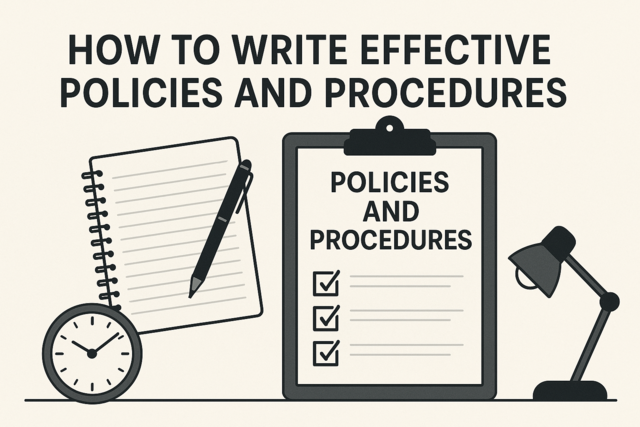Introduction
Nonverbal communication can mean a lot of different things, and all of them are important in being an effective communicator. The most obvious forms of nonverbal communication are body language and gestures, and we will look specifically at these. Additionally, physical appearance, touching, and even design choices can be used to communicate a number of things about a person.
Objectives
This article will help you learn to use nonverbal cues to better understand others. Likewise, you can hone these skills to be sure you are effectively communicating your ideas.
ü What does "nonverbal communication" include?
ü Why is nonverbal communication effective?
ü How can I read nonverbal cues from others?
ü What are the real-world applications of nonverbal communication?
Defining Nonverbal Communication
Nonverbal communication is nearly anything that sends an idea from one person to another without the use of words.
It is important to keep in mind the fact that cultural norms define a lot about nonverbal communication. Personal space, eye contact, and touching are just a few of the nonverbal tools that mean different things in different cultures. In the United States, for example, it is considered polite to maintain quite a bit of eye contact when speaking to a superior. In many Asian cultures, however, this would be seen as disrespectful. The ideas in this section are based primarily on what is considered appropriate in North America.
One of the common phrases used when talking about nonverbal communication is "body language." Body language can include gestures, movements, and even posture, that is used to send messages about what you mean – most of which is defined at length below. Sometimes body language doesn't match what is being said, and having an understanding of how to read it can be very helpful in determining what another person really wants or needs.
- Eye contact is an important component of nonverbal communication. If someone is interested in what is being said, he or she will engage in more eye contact with the speaker. Too much eye contact, however, signals that the listener is somewhat aggressive or distrustful. Too little eye contact is often a sign that the listener is either not really interested or feels negatively about what is being said.
- Speaking of eye contact, it is possible to determine that someone is bored by noticing that they looking directly at the person speaking, but that the eyes are a little unfocused. This may be accompanied by a tilt of the head and fiddling with the hands.
- People who cross their arms over the chest are often keeping something to themselves, or they may even be protecting themselves from something. Of course, this has to be related to the situation. If the people speaking are very comfortable with one another, the crossed arms could signify that one person is thinking very deeply about what is being said.
- The appropriate amount of personal space is something that can vary from person to person, but it is more-or-less dictated by social norms within a culture. U.S. norms dictate approximately an arm's length between two people. Someone who is very engaged in what another is saying will be more likely to lean forward or to touch the other person.
- Facial expressions convey a lot about what a person is thinking. While we can control our facial expressions to some degree, there are many times when they just naturally occur (as is common with verbal cues, as we learned in the previous section).
In addition to body language, we are able to pick up cues about others through their style and other physical characteristics, such as clothing, hairstyle, home decor, etc.
For example, consider military officers. Their uniforms can tell you what branch of the military they belong to, as well as their ranks and positions. Even knowing that the person is in the military gives clues to their ways of thinking and interacting with others. Like the uniform, there are many objects in our day-to-day lives that have symbolic meaning, and this is also a matter of nonverbal communication.
Why Is Nonverbal Communication Effective?
As we've already stated, nonverbal cues may differ from culture to culture. On the other hand, studies have repeatedly shown that there are seven facial expressions that are actually universal throughout the human race. These include anger, contempt, disgust, fear, happiness, sadness, and surprise.
With this type of information hard-wired into us, it's no surprise that we rely on nonverbal communication so much. In fact, it has been estimated that as much as 80 percent of communication is about what is not being said. Rather, it's based on perceptions of a person's gestures, eye contact, clothing, and environment.
Being tuned into someone's nonverbal communication cues can help you determine what is truly being said beyond just the words being spoken. Sometimes a person may be agreeing with you out loud, while clues, such as avoiding eye contact or fidgeting, tell that perhaps they are not being completely honest with their words. That means that noticing when a person's nonverbal and verbal communication match will help determine that they are on board with your idea.
This understanding of body language can also be instrumental in helping others accept your point of view. Using techniques such as "mirroring" help put others at ease. This technique involves subtly mimicking the other person's gestures, body language, and even speech patterns. Mirroring happens naturally when people communicate, but strategic use of the method can help make others more comfortable in a tense situation. When using this technique, it is important that the person not feel they are being teased, which means that the mirroring should not be exact.
Reading Nonverbal Cues
In addition to those things mentioned above, there are literally thousands of nonverbal cues that can be used to ascertain what someone else is communicating. Here are just a few examples. Keep in mind that nonverbal cues can be misleading, so it is best to take all types of information into consideration.
- Aggressive: frowns, pursed lips, glaring, squinting, clenching fists, red face, invading personal space, shaking a finger, sudden movements
- Attentive: holding still while listening, leaning forward, gazing, ignoring distractions, nodding slowly, paraphrasing what's been said
- Bored: looking around, drumming fingers, yawning, slouching, finding other things to do, looking at the clock repeatedly
- Deceptive: forced smiles (eyes aren't smiling when the mouth is), sweating, sudden movements, twitching, seems distracted, fidgeting
- Defensive: covering vital organs, lowering chin, crossing arms, using a physical barrier, making oneself small, tensing up, glancing around, as if looking for an escape
- Relaxed: steady breathing, lowered voice, arms hang to sides, using hands when talking, smooth gestures, smiling, even speed and pitch in speaking, little blinking, unwrinkled forehead
Nonverbal Communication: Case Study
Marcus has arrived 10 minutes early for his job interview at ABC Company. His suit is pressed, and his tie is brand new. He checks in with the receptionist, who sits behind a glass desk with nothing on it but a computer, a phone, and a framed photo of a Golden Retriever. Her hair is intricately styled, and her nails are perfectly manicured. She looks Marcus up and down, smiles a bit, nods, and asks him to have a seat. Marcus sits upright quietly in the lobby, with his briefcase on his lap.
Twenty minutes later, the company's manager enters and shakes Marcus's hand in both of his. The manager asks Marcus to follow him, and the two walk down the stark hallway to his office. Once inside, the manager moves a stack of files off of a chair to make room for Marcus to sit down. He closes the door and takes his place behind a desk crowded with family vacation photos, wind-up toys, and more files. Marcus sits back in his chair with his arms crossed over his chest. The manager also leans back in his chair.
The manager reviews Marcus's resume, looks directly at him, and tells him how great it looks. He asks Marcus about his previous employment. Marcus looks at the floor and fidgets with his fingers as he talks about his experience working at another company. When finished, he looks back at the manager who asks a question about his interests. As Marcus talks about his love for music, he leans forward and talks more rapidly. He uses his hands to emphasize what he is saying and smiles while speaking.
Communicating in Writing
Introduction
Written communication is as diverse as verbal and nonverbal communication. It draws on individual languages, dialects, experiences, and education to create a form of communication that can extend beyond words and actions. Although not as old as verbal and nonverbal communication, writing has been in existence in some form or another for over 5,500 years.
Objectives
This article will address the different components of written communication. It will enable individuals to use writing to maximize their ability to communicate for personal and business reasons.
ü What are the benefits of communicating in writing?
ü What are the drawbacks of communicating in writing?
ü How can I avoid misunderstandings?
ü What factors contribute to using writing effectively?
Using Written Communication
Unless you hold an English degree, or work as a professional writer for a living, chances are good that you are at least a little bit intimidated by the prospect of written communication. If you're afraid of looking inadequate in terms of your ability to write and use proper grammar, syntax, and punctuation (or if you've had a bad experience with the misunderstandings that can arise from an email message gone wrong), you're not alone. Written communication is fraught with the potential for challenges, mistakes, and downright catastrophes.
At the same time, written communication has never been more important than it is in today's technological age. Personal communication devices, emails, memos, and text messages are among the most popular methods of communication in both the business world. and among friends. Each of these relies on using the written word to convey meaning.
When you rely on writing as your sole means of communication – no matter what medium you use – there are a number of factors to take into consideration:
Audience
The audience of a piece of writing should be the single most important factor you bear in mind when determining how and what you will say – especially in business. When you plan to send out a letter, memo, or other type of written message, consider who will be reading it and why. The underlying purpose of almost all writing is to communicate a specific idea or set of ideas through words. If you forget who will be on the receiving end of the writing, these ideas are much more likely to get skewed or misinterpreted.
For example, starting off a business memo with a personal message is generally not appropriate. Likewise, the legal jargon you might work with on a daily basis might not be best suited for an email to your grandmother.
Style
Although written communication should always be tailored to your audience, your own personal writing style is an important part of making your writing effective. If you typically write brief, matter-of-fact memos, because that is your personal style, there is no reason why you should be forced to adopt a more flowery style. In fact, switching from one style to another can actually create more problems, since your audience may read more into the sudden change, than they would if you had remained consistent.
Formality
The level of formality of a piece of writing conveys much about the author (and the recipient). For business writing, using a formal tone, maintaining proper headings, and following specified formatting, not only demonstrates your own level of ability and professionalism, it also gives a clue as to how you perceive your audience. For example, a hastily written email condemning the practice of gossip at the water cooler does not demonstrate that either: a) you are taking the issue seriously; or b) you consider the email's recipients worthy of a more formal request. This type of email will most likely NOT result in your desired action.
Skill Level
Although you may not have the greatest writing skills in the world, there is no reason why you should be afraid of writing. Instead, you should write with your own skill level in mind. If you aren't the greatest at crafting lengthy sentences or using large words, don't. There is nothing wrong with using concise sentences – as long as you are using them appropriately.
Consider the following message:
All members of the executive-level staff must report to the conference room at precisely 12 o'clock noon on the anniversary of the organization's opening date.
This lengthy sentence has great potential for error. Misuse of hyphens, apostrophes, grammar, and spelling can easily occur among even the most experienced of writers.
This example would also work:
Will all the executive staff members please meet for our opening anniversary? We will be meeting in the conference room at noon.
Although you might prefer to use the first example, due to the higher level of professionalism it presents, it is always better to err on the side of caution. Unless you are 100 percent certain of your skills as a writer, simple and correct is always better than complicated and potentially incorrect.
Permanence
Written communication is much more permanent that verbal or nonverbal communication. When you write something down – whether it's on paper, email, or a napkin you found at a bar – there is no taking it back. This is why legally binding contracts are almost always restricted to writing: It's the one place where you cannot pretend you "said" something other than what's there. This is why you should always write with the knowledge that the words you choose today can have repercussions in the future.
Pros and Cons of Written Communication
Like most things, there are two sides to written communication. In some instances, it can be an invaluable tool to save time and money. In others, it can result in greater misunderstandings, and even potential lawsuits. Before you commit something to writing, it's always a good idea to determine if a phone call, or even a quick meeting, would be better.
Pros of Written Communication
- You can send out bulk messages in a uniform, consistent manner.
- You have a record of your communication.
- You can organize long thought processes, or otherwise lengthy messages.
- You can review what you've written before it is sent out.
Cons of Written Communication
- It can take longer to write out and proofread a message, than it can to simply verbalize it in the first place.
- Emotion, sarcasm, and jokes can be easily misunderstood.
- Many people consider it to be too informal (or too formal, as the case may be).
- Your audience may read something into it that you didn't intend.
- Your skill level might give the wrong impression to your audience.
Tips for Avoiding Misunderstandings in Written Communication
Of course, there will come a time and place, when communicating through writing is either your only option, or the best one. Although having a solid grasp of language and grammar is a great place to start, you can also rely on these tips to reduce the possibility of miscommunication.
- Don't use slang words or words that have different meanings within different cultures.
- Don't rely on emoticons (the smiley faces that can either be made out of colons and parentheses or added to an email in a colorful form) to save you from a misunderstanding. If there is a chance your choice of sentence can be taken the wrong way, reword it so that it cannot.
- Always proofread something before you send or deliver it. Use the spellchecker on your word processor, if you have to, but don't rely on it to take care of potential misunderstandings or other errors.
- Be short and to the point. The more you stray from a subject, the greater the chances for problems arising later on.
- Take the time to consider how your message is organized. You want your ideas to flow in a logical manner.
- Don't use comparisons or figures of speech in business writing. This is no place to show your creative abilities. Instead, make your point and move on.
- Show respect for the recipients of your message. Don't use language that will either cause offense or undermine their intelligence or capabilities.






























